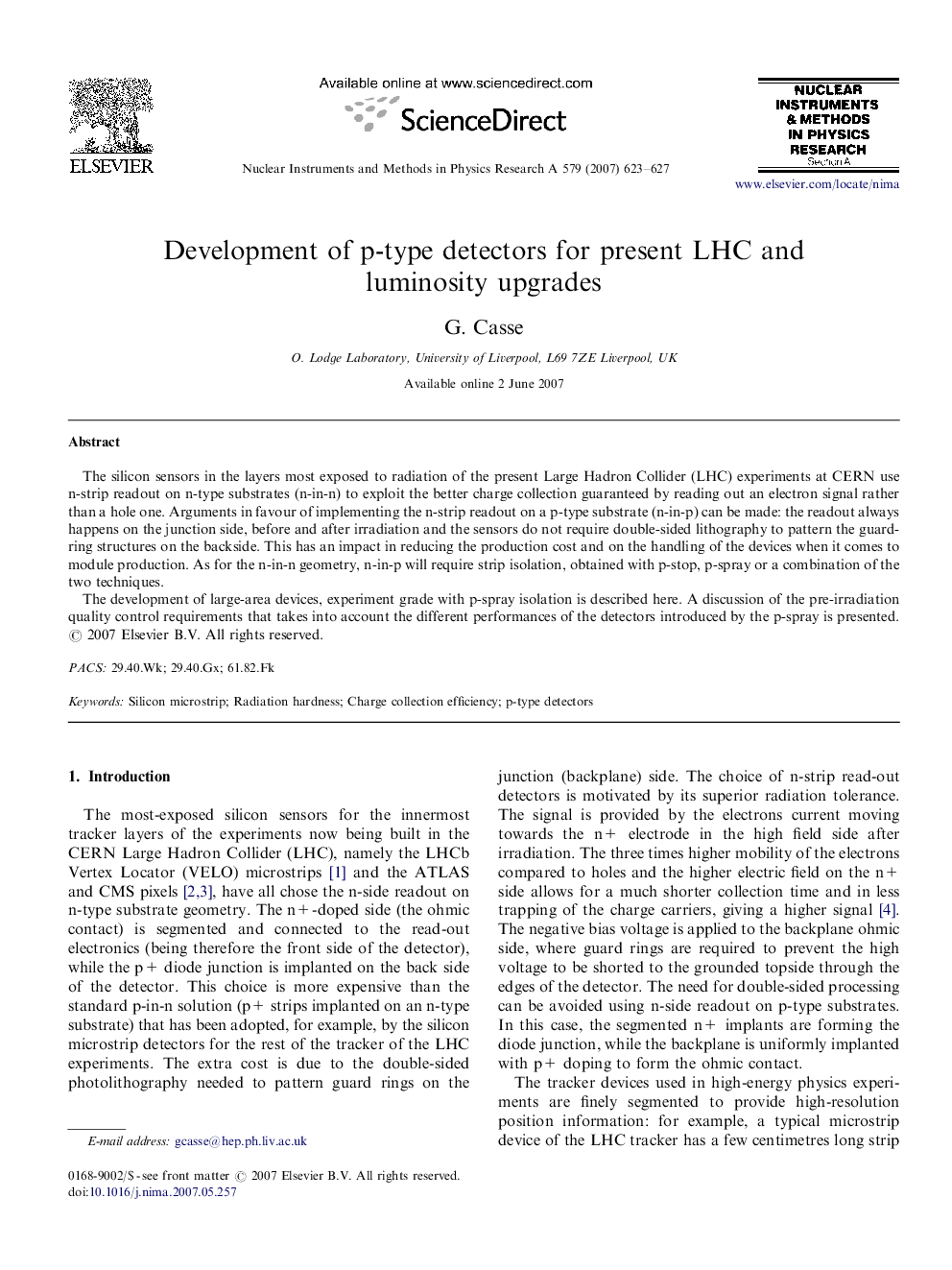| Article ID | Journal | Published Year | Pages | File Type |
|---|---|---|---|---|
| 1830031 | Nuclear Instruments and Methods in Physics Research Section A: Accelerators, Spectrometers, Detectors and Associated Equipment | 2007 | 5 Pages |
The silicon sensors in the layers most exposed to radiation of the present Large Hadron Collider (LHC) experiments at CERN use n-strip readout on n-type substrates (n-in-n) to exploit the better charge collection guaranteed by reading out an electron signal rather than a hole one. Arguments in favour of implementing the n-strip readout on a p-type substrate (n-in-p) can be made: the readout always happens on the junction side, before and after irradiation and the sensors do not require double-sided lithography to pattern the guard-ring structures on the backside. This has an impact in reducing the production cost and on the handling of the devices when it comes to module production. As for the n-in-n geometry, n-in-p will require strip isolation, obtained with p-stop, p-spray or a combination of the two techniques.The development of large-area devices, experiment grade with p-spray isolation is described here. A discussion of the pre-irradiation quality control requirements that takes into account the different performances of the detectors introduced by the p-spray is presented.
